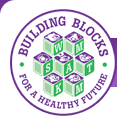
| Brought to you by the US Department of Health and Human Services, Substance Abuse & Mental health Services Administration |
 |
Home  About Us About Us  Links Links  Get E-mail Updates Get E-mail Updates  Awards Awards |
 |
|||
|
|
|||||
| Send this page to a friend | Print this page |  |
||||
|
|
 |
 
Peer PressureRelated Content
Children often seek a sense of belonging at school and will engage in certain behaviors to fit in among their peers (someone in their age group). Even in preschool they are becoming concerned with what their friends think and do. Children want to be well liked and included in a group, which makes them susceptible to peer pressure (influence that members of the same age group can have over each other). Peer pressure has been shown to affect children as early as preschool age and becomes an even greater risk as they transition into middle and high school. Peer pressure can impact children both positively and negatively--positive peer pressure may influence a child to engage in healthy behaviors while negative peer pressure can eventually lead to risky behaviors such as substance use. Every child is susceptible to various forms of peer pressure. Research indicates that parents and caregivers that engage in an authoritative parenting style— a child-centered approach often referred to as balanced parenting where monitoring and support are above average--not only foster healthy, positive relationships with their child, but also help the child build confidence and skills to resist peer pressures associated with risky behaviors such as alcohol use. Peer relationships (relationships with children their own age) are important in a child’s life as they form the basis of friendships and, help develop certain social skills, such as cooperation, negotiation and conflict resolution. The importance of choosing and forming these relationships is vital even during the preschool years as peers have been shown to have strong influences on risky behaviors later on in life. Ways Children Exert Pressure on Their Peers Peer pressure in young children usually revolves around what toys to play with or what games to play. Children also exert pressure through teasing, name-calling, withholding friendship, and by threatening exclusion from play. They may also dare each other to leap from high places or squeeze into tight spaces, inviting bodily harm. Later on, as your child transitions into middle school, that pressure becomes more intense as kids try to conform or “be cool” in order to be included in the group. Tips to Prepare Your Child for Negative Peer Pressure Start building the foundation to help children deal with those who might try to pressure them into doing something risky. Once children approach adolescence, they will encounter greater negative peer pressure to engage in very risky behaviors, such as smoking, drinking, and sexual activity and will need the confidence to stand up for themselves.
Family Activity: Be Your Best Self Quiz for Parents: Children’s Influences Resources From Education.com
Additional Resources “Dealing with Preschool Peer Pressure” from More4Kids gives parents of preschoolers tips on how to handle peer pressure. “Peer Pressure,” from the Encyclopedia of Children’s Health, explores peer pressure and peer relations across the age groups. “Parenting Style, Religiosity, Peers and Adolescent Heavy Drinking”, Stephen J. Bahr and John P. Hoffman, Journal of Studies on Alcohol and Drugs “What’s Your Parenting Style?,” from Parents. The Anti-Drug. |
||||||||||
| Site Map | Contact Us | FAQ | Ask SAMHSA | Privacy Policy | Web Site Policies | FOIA | USA.gov | Plain Language |
|
Updated on 5/1/2012 |